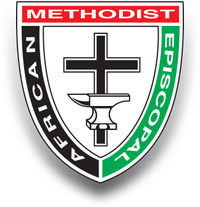The African Methodist Episcopal Church was started in 1787 in Philadelphia, Pennsylvania, by a group of disinherited Americans whose forefathers came from Africa. The leader of this group was a 27-year-old “African,” Richard Allen. At that time the word “African” was used to designate those persons whom we now call African American.
The movement to organize a church separated from the white peoples’ church was started in response to the “Africans’’’ need for opportunities for self-expression and fuller involvement in the service of the worship of God, and in society as a whole. It was the answer to a cry for social recognition as human beings, and the means through which a group of people started on a program, which gave them a sense of dignity and self-respect.
To foster this program, Richard Allen considered it important to conduct night school classes in which his people could learn how to help themselves. Out of these night school classes had come the church’s philosophy of education with its strong emphasis upon self-help. The general emphasis has not been significantly changed until this day. In addition to the educational program of the local church, the A.M.E. Church operates eleven institutions of higher education.
Most religious groups had their origin in some theological, doctrinal, or ideological dispute or concern. But the A.M.E. Church originated as a protest against inhumane treatment, which the helpless people of African descent were forced to accept from the white people belonging to the Saint George Methodist Episcopal Church in Philadelphia, Pennsylvania. This fact says to us that the organization of the A.M.E. Church was the result of racial discrimination rather than of any theological or actual concern.
The A.M.E. Church is a member of the family of Methodist Churches. Its founder and first active bishop, Richard Allen, felt no religious sect how do you nomination would suit the passing of his people as well as did methodism, with its emphasis on the plain and simple Methodism the “African” needed to encourage him to make progress, to worship God freely, and to fill every office for which he had the capability.
The “Africans” who started the A.M.E. Church were very poor and most of them could not read nor write, yet under the leadership of Richard Allen, they managed to buy an old blacksmith shop, and to move it to a lot at the corner of Sixth and Lombard Street in Philadelphia, Pennsylvania, where they organized Bethel A.M.E. Church (also called Mother Bethel) which stands today as one of the historic shrines of Philadelphia. In time, other African-American churches were started in Baltimore, Maryland; Salem, New Jersey; Attelsboro, Pennsylvania; Wilmington, Delaware; and other places in the United States. In the year 1816, these churches came together and formed the A.M.E. Church. Richard Allen was elected to serve as the first mission. Today, the A.M.E. Church has 20 active bishops and more than 1 million members scattered throughout the 50 states in the USA, The Dominion of Canada, South America, West Africa, South Africa, and the West Indies.
The movement to organize a church separated from the white peoples’ church was started in response to the “Africans’’’ need for opportunities for self-expression and fuller involvement in the service of the worship of God, and in society as a whole. It was the answer to a cry for social recognition as human beings, and the means through which a group of people started on a program, which gave them a sense of dignity and self-respect.
To foster this program, Richard Allen considered it important to conduct night school classes in which his people could learn how to help themselves. Out of these night school classes had come the church’s philosophy of education with its strong emphasis upon self-help. The general emphasis has not been significantly changed until this day. In addition to the educational program of the local church, the A.M.E. Church operates eleven institutions of higher education.
Most religious groups had their origin in some theological, doctrinal, or ideological dispute or concern. But the A.M.E. Church originated as a protest against inhumane treatment, which the helpless people of African descent were forced to accept from the white people belonging to the Saint George Methodist Episcopal Church in Philadelphia, Pennsylvania. This fact says to us that the organization of the A.M.E. Church was the result of racial discrimination rather than of any theological or actual concern.
The A.M.E. Church is a member of the family of Methodist Churches. Its founder and first active bishop, Richard Allen, felt no religious sect how do you nomination would suit the passing of his people as well as did methodism, with its emphasis on the plain and simple Methodism the “African” needed to encourage him to make progress, to worship God freely, and to fill every office for which he had the capability.
The “Africans” who started the A.M.E. Church were very poor and most of them could not read nor write, yet under the leadership of Richard Allen, they managed to buy an old blacksmith shop, and to move it to a lot at the corner of Sixth and Lombard Street in Philadelphia, Pennsylvania, where they organized Bethel A.M.E. Church (also called Mother Bethel) which stands today as one of the historic shrines of Philadelphia. In time, other African-American churches were started in Baltimore, Maryland; Salem, New Jersey; Attelsboro, Pennsylvania; Wilmington, Delaware; and other places in the United States. In the year 1816, these churches came together and formed the A.M.E. Church. Richard Allen was elected to serve as the first mission. Today, the A.M.E. Church has 20 active bishops and more than 1 million members scattered throughout the 50 states in the USA, The Dominion of Canada, South America, West Africa, South Africa, and the West Indies.
